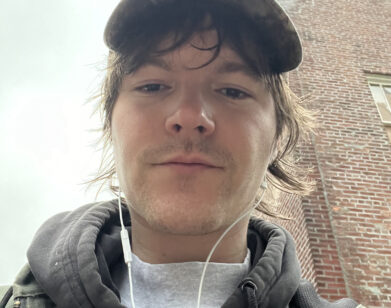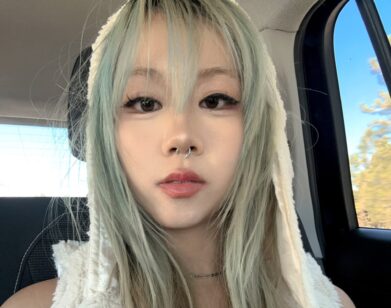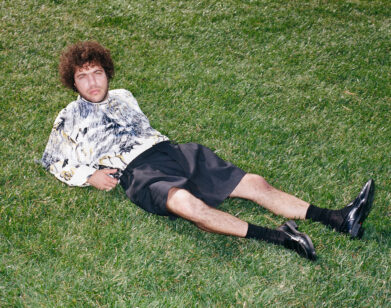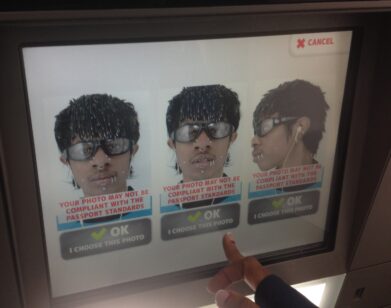Janelle Monáe Sings the Runway Electric
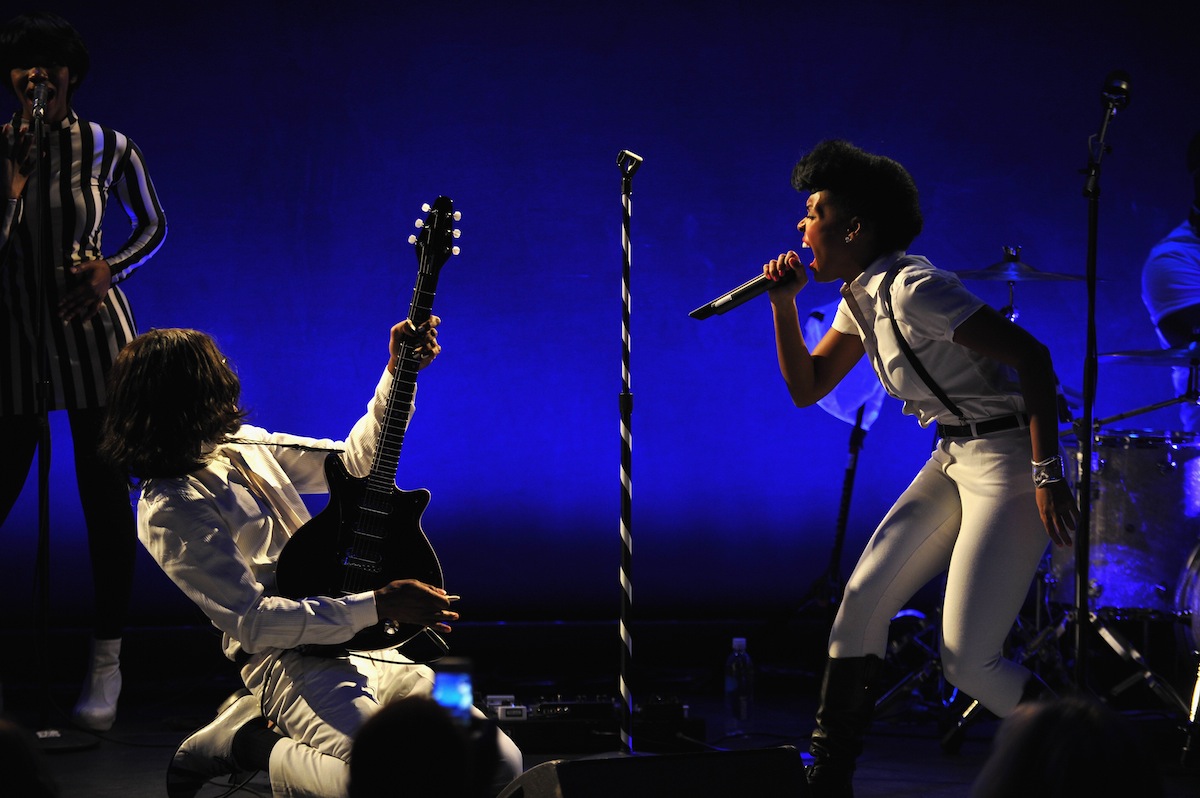
ABOVE: JANELLE MONÁE PERFORMING AT AMERICAN EXPRESS UNSTAGED. IMAGE COURTESY OF BRYAN BEDDER/GETTY
There was an extra spring in Lindsey Wixson’s step when she stepped out in the first look at Rebecca Minkoff’s Spring/Summer 2014 runway show on Friday. While it could have been because of the tall, embellished boots or kicky little skirt she was wearing, we’re pretty sure we can chalk it up to what was happening behind her: an impossibly energetic live performance by Janelle Monáe, in her signature black and white and complete with band and backup dancers, at the end of the runway. The collaboration was the first official Mercedes-Benz Fashion Week event hosted by American Express Unstaged, a three-year-old-project that has produced and live-streamed events with musicians including Vampire Weekend, Kings of Leon, Usher, and My Morning Jacket.
After the show, Monáe hustled to another, smaller one—a private performance in Lincoln Center’s The Box space, which had been transformed into a cabaret-like setting for the occasion. We took a few minutes to chat with her once it was over about fashion and her ambitious, funk-infused new Afrofuturist concept album, The Electric Lady, a prequel to her excellent 2010 debut, The ArchAndroid. The album’s out tomorrow; you can watch the full runway show below.
ALEXANDRIA SYMONDS: The new album’s incredible; since it started streaming, I haven’t been able to stop.
JANELLE MONÁE: Oh, my gosh, are you serious? Thank you. We’ll have to be sure to get you a copy for your car, as well. But I don’t know if you drive; this is New York.
SYMONDS: I love the skit with the radio call-in show, in which a caller asks whether the Electric Lady and the ArchAndroid are the same person and gets hung up on. It got me thinking that I wanted to ask you about this distinct musical world that you’ve created, and how much about it you’ve known from the beginning and how much you’re building it as you go.
MONÁE: Well, it started with a concept. I will say, with The Electric Lady, though, I didn’t know where we were going to go in the story. It was inspired by my paintings. When I was painting every night and singing at the same time in front of thousands of people, I would paint this female silhouette, and then I ended up doing this almost a hundred times. I went home and talked to my therapist about it, and she encouraged me; she said, “You should name the paintings and do a showing at a gallery or something,” and I had a hard time coming up with a name, so I just listened to the energy that I got from each of them. The words, “The Electric Lady,” came to my spirit when I was just thinking about the visceral reaction that I got. I started thinking about a world where there’s a new woman, a new breed, a new, 21st-century girl, right? I started to ask myself, “What does she think about love, politics, sexuality, religion,” etc.? And that helped me write the album.
When I started to think about those topics, I realized that Cindy Mayweather, these are the very same things that they want her to be disassembled for. This is why she’s wanted; this is why she’s on the run—because she’s an android, and she’s not supposed to have feelings or even speak about anything that could cause an uprising in her community. And so I knew that I wanted to do a prequel, before The ArchAndroid, to tell people about her thoughts—as well as mine—on this album, and where she was before she became the ArchAndroid.
SYMONDS: These two explorations of 21st-century femininity.
MONÁE: Yeah.
SYMONDS: Since we’re here at Fashion Week, I’d love to hear from you how you feel your personal style has evolved.
MONÁE: Sure. I’ve always been a minimalist at heart, so I really love striking, bold pieces. And I think black and white is very bold, and depending on how much white you use, or black you use, you’re making a statement. I like to look at my fashion as walking art with a message. The message is, the art of it is, the details [in] what you have on. I have scarves that have black-and-white patterns, I wear boots, I may have on jewelry to accent, or my nails be a color, or my lips may be a pop of color—CoverGirl lipstick—but I think of it as walking art with a message, and the message is to pay homage to the working class. This is considered my uniform, something I take pride in, and it reminds me that my work is never done.
SYMONDS: Are you coming at the idea of artistic creation from a Marxist angle?
MONÁE: Not really! I think as I’m finding out more about myself, these ideas just come out. I try to just dig as deep as possible and make sure that my messages remain strong, not just inspiring to me, but to everybody. Because I think that we’re living in a world where there are a certain section of people who are marginalized and discriminated against, and I’ve always wanted to tie in great music with a message, to help those, like myself, who have felt marginalized.
SYMONDS: Could you tell me one thing about the first time you met Prince?
MONÁE: Aww. The first time, I was nervous, scared; he called me on the phone and just told me he was a huge fan, and he invited us over for a jam session, and we stayed at his house until about seven in the morning, just jamming. So he’s a friend, he’s a mentor, and I’m honored that I got a chance to work with him on the album.
JANELLE MONÁE’S THE ELECTRIC LADY IS OUT TOMORROW, SEPTEMBER 10. FOR MORE ON THE ARTIST, VISIT HER WEBSITE. FOR MORE ON AMEX UNSTAGED, VISIT ITS YOUTUBE CHANNEL.

